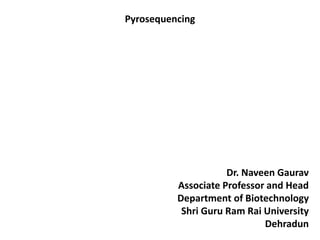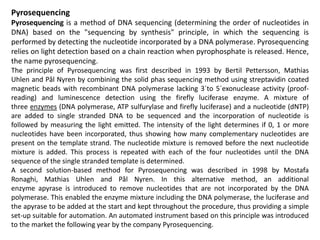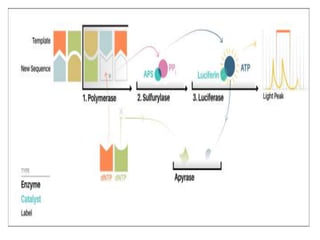Pyrosequencing is a DNA sequencing method that detects nucleotide incorporation through light emission during a 'sequencing by synthesis' process. Developed from principles established in the early 1990s, it has evolved through various methods, including solid-phase and microfluidic approaches, facilitating high-throughput sequencing. Despite its advantages, pyrosequencing faces limitations in read length and accuracy due to the absence of proofreading activity.





